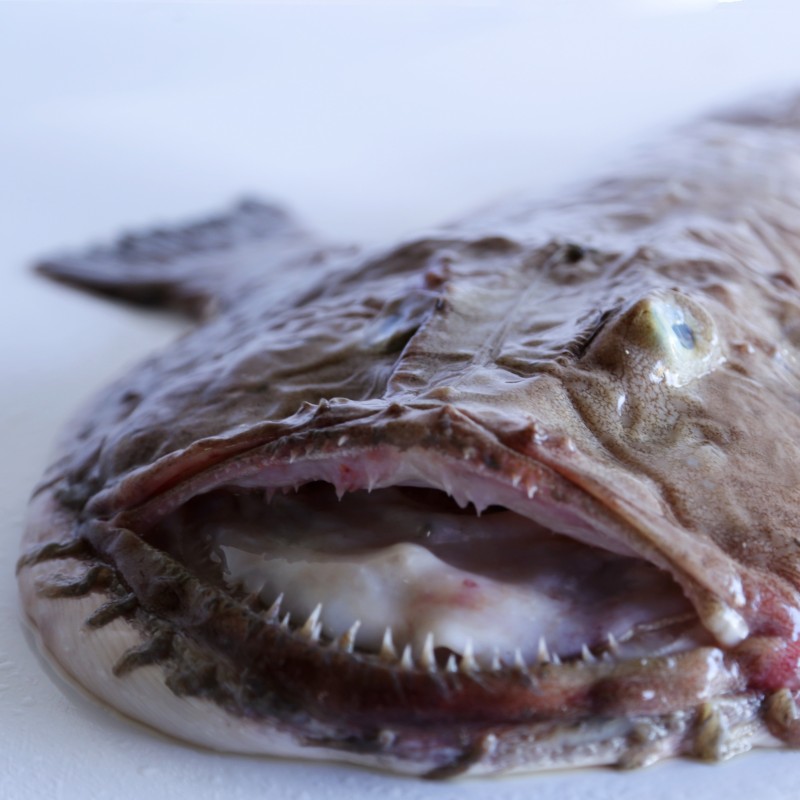The black-bellied monkfish (Lophius budegasa) inhabits the seabed along European coasts. It feeds on crustaceans and fish, which makes its meat one of the most prized of its kind.
It’s a white fish with a large, broad and flattened head and a conical body. The mouth, with abundant teeth, is enormous, almost as wide as its head. The lips are fleshy, and the lower jaw protrudes in front of the upper one. It doesn’t have scales, and it can vary in colour, from dark red to grey. Its belly can also be whitish in colour.
The black-bellied monkfish contains different vitamins, mainly group B (B1, B3, B9 or folic acid), and minerals (iron, phosphorus, magnesium and potassium). It's the perfect fish for low-calorie and low-fat diets.
The best-known monkfish species are the common monkfish (also called white monkfish) and the black-bellied monkfish. The latter is the most sought after due to the quality of its meat (which doesn’t shrink when cooked) and the larger size of its tail compared to other species. The tail of the black-bellied monkfish accounts for approximately half of its weight, with the other half corresponding to the head.
Its meat is excellent, firm, and free of bones. The head can be used to make fish stock, and the tail can be enjoyed in many ways, particularly with recipes that call for a firm, flavourful, and boneless fish. It’s delicious battered, in suquet seafood stews, a salpicón together with other fish and shellfish, on fish and shellfish skewers, or simply cooked with mayonnaise or a seafood sauce.
Name: Black anglerfish (Lophius budegassa)
FAO 3-alpha code: ANK
Catch or farming area: FAO-27
Sub-area: To be specified at time of delivery
Method of production: Capture
Fishing gear: Trawls
Store between: 0-4°C
IMPORTANT: The net quantity and expiry date of the product shall be specified at the time of delivery.




